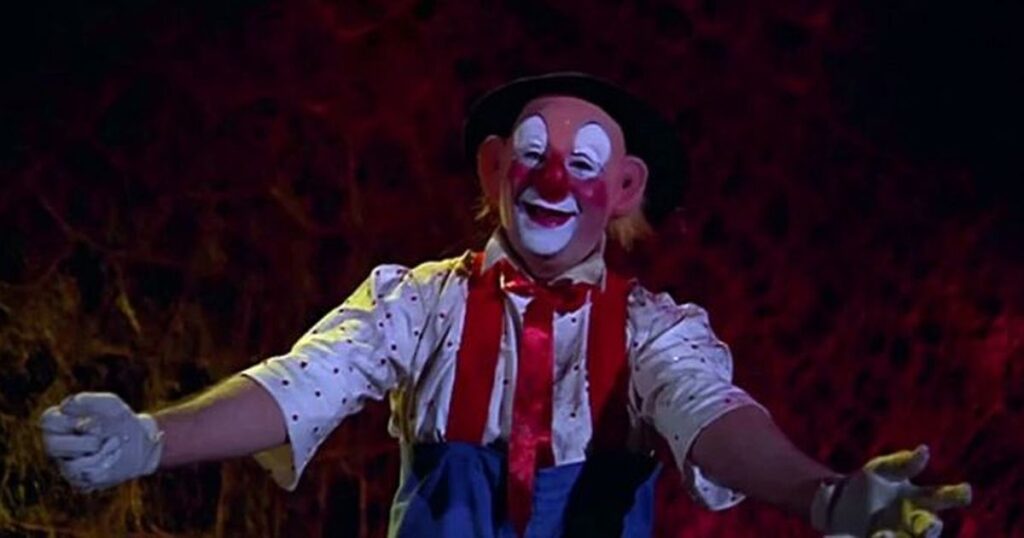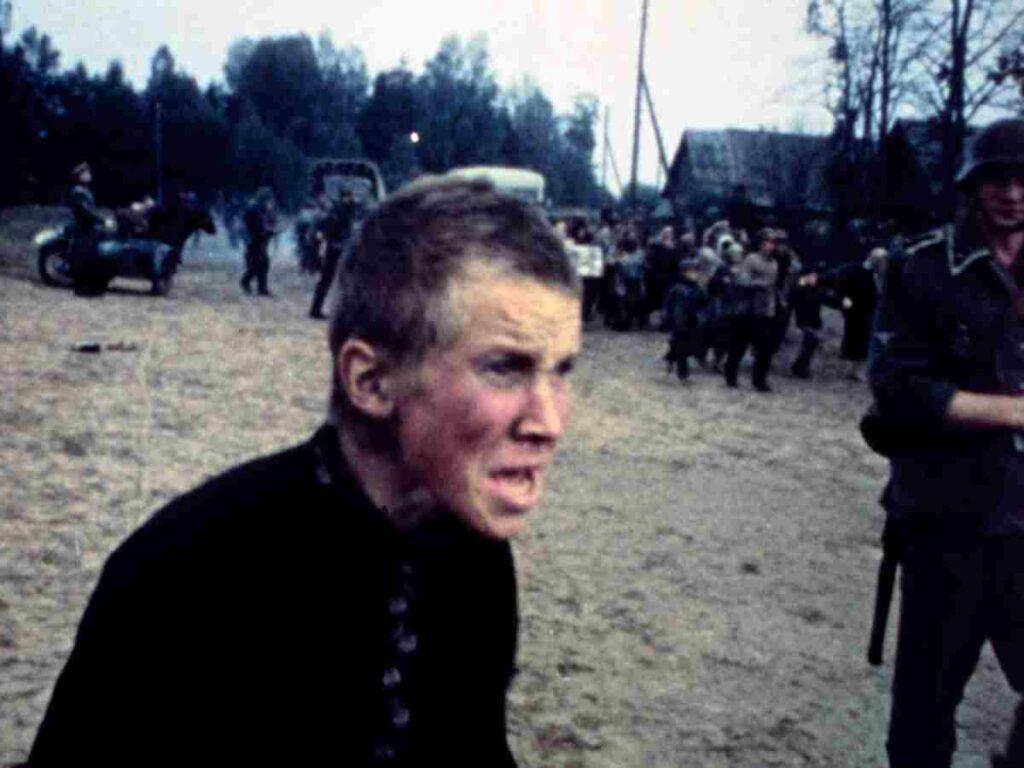Mera Naam Joker is a coming-of-age tale, a bildungsroman, a tragedy and a romance all blended together.
What makes a classic a classic? A question that has stumped filmmakers and moviegoers alike for as long as the medium has existed. What enduring quality does an art form possess to transcend all boundaries and become immortal?
Long after those who created and nourished the art are gone from this world, the art still stands like the crumbled statue of Ozymandias; the intent, long forgotten, the art, ever-living.
Such is the mystery and mutual connection between art and life. An unending ordeal of relentless performances that revive and rejuvenate that which is fallen.
Such is the magic of Mera Naam Joker. The movie is a coming-of-age tale, a bildungsroman, a tragedy and a romance all blended together. It gives us such a human depiction of life itself that it would be impossible for even the most uninterested to ignore and not appreciate the simplistic yet deep cutting symbolic allegories. The movie is truly innovative in how it handles its characters and their desires. It revolves around a man named Raju, a famous joker in a circus company.
Recommended: Quiz: Can You Name These 70s Bollywood Movies by One Image?
Mera Naan Joker is replete with symbolism. The first, most important reference comes in the introduction which informs us in a Chaplin-esque manner with comedy and empathy, that our protagonist must undergo an operation because his heart is too big for the world. The movie gives us an insight into Raju — he is a man who loves too much. His protest of the comic operation is riveting as he states that it is the world that should be operated on and not him.
Within the first few minutes, we get a deep insight into the character and the wonderful symbolism used to depict the cost of loving everyone with all one has in this world that might not love you back is heart-touching.
The film does a great job depicting the adolescent stage of Raju’s life. The emotional, psychological changes boys go through in this age are dealt with in deep detail. The idea of physical attraction towards the opposite sex is handled with much sensitivity and care. The depiction was far ahead of its time and manages to nail the insecurities and latent yearning. For this is the phase of Raju’s first confrontation with sexual desire. The sexual tension during his encounters with his teacher Mary is quite intense and the flavourful drama has been encapsulated perfectly through masterclass direction, great acting and amazing screenplay.
Obviously, his feelings are not reciprocated by her. The emotions that are displayed on-screen are heart-touching as we see a mixture of frustration, sorrow and hopelessness. The tone stretches far from the innocent coming-of-age tone we are used to and takes a sombre turn to cement itself as a depiction grounded in realism.
Recommended: 10 Longest Bollywood Movies: ‘Mera Naam Joker’ To ‘Tamas’
That wedding moment where Raju asks Mary, “What must I do?” resonates brilliantly with the entire film. What must Raju of the present, past and future do to get back the love that he has offered to the world — tis truly heart-wrenching. Coupled with that are a morality and societal factor. Even the teacher asks herself the same question. Raju too wonders whether he should hide his beautiful feeling of love only because the society despises it or refuses to recognize it? Is the recipient of such a pure love not worthy enough to be notified of it only due to social prejudices?
The theme of choice is quite prevalent throughout the movie. Many characters have to go through such morally ambiguous decisions. Perhaps, that is the reason why the movie did not do so well when it was released. The audiences went in anticipation of a straight-forward film that answers life’s questions. But what they got was a film that raises questions, makes them think. It inevitably brings the audience face-to-face with their own lives. This is no utopia.
The complexity and nuanced themes of the first episode of Raju’s life were not meant to be enjoyed. But to be undone and understood with one’s own faculties. That, perhaps, didn’t engage the contemporary audience.
Recommended: 13 Indian Films On Netflix You Haven’t Probably Seen
The second episode of his life is based upon an idealistic vision of love, one that is unattainable, one that flies high above like Marina, the trapeze artist who soars so high that the clumsy clown, Raju can never imagine to reach her. Yet she notices him and loves him. She is perfection personified for our lovable clown. She’s the only place of respite and brightness in a world which is dark and gloomy, otherwise. Marina represents that epitome of love that Raju could only dream of and for him to carry on his duty of putting smiles on all faces, Marina must leave him and return to her homeland of Russia.
The final episode we witness in this film is perhaps, the most developed and deepest one. Meena meets Raju first as a boy and when it is revealed that she is actually a girl, he runs away from her, tries to distance himself from her. The Guru Dutt-esque style surely references the Kaagaz Ke Phool tragedy as it is closely related to it in both style and substance. She is evoked as a symbol of feminine power that women have over men. He is afraid of her feminine charm and doesn’t want to fall in the trap of love. Perhaps this segment of the story is the most autobiographical in nature as it enunciates Raj Kapoor’s own love-life history wherein he deems himself cursed by the power to love and subsequently suffer betrayal at the hands of those that he gave up his heart to.
Recommended: 14 Rare, Lesser-Known Facts About Hindi Cinema
The movie is trying to warn its audiences against the enticing nature of feminine beauty to which men easily fall prey to. The “Angel in the House and Devil in the Flesh” allegory is widely used for Meena as she is portrayed both as a pure thing to be loved and as a seduced with malice in her heart. The movie tells us that Meena truly does love Raju but her love falters when she sees him as an obstacle to her success. The willingness of both of them to let go of each other and not fighting for each other shows that they could sacrifice their relationships with each other because the relationship itself was based on mutual interest. Meena needed a home and Raju needed to be loved.
In the end, we are left perplexed with the looming question regarding the identity of the joker. What is the joker? Is he simply someone who makes others laugh or he is something more than that.
The symbolic joker doll that he offered to all three women gets rejected by all of them and always returned to Raju. It perhaps denotes that the actor himself was also just a joker and nothing more. A joker, an object of entertainment to be laughed at for the duration of the circus and then to be forgotten for no one cares about his identity, no one knows who he really is, he is a ‘behrupia’ whose true, vulnerable and not-so-entertaining visage of the sadness and sorrows of human life won’t be accepted by anyone if they see his true face. That is also what happened to the movie itself.
Recommended: Where To Watch Latest Movies Online: 12 Best Sites
As the actor, he was known to the audience only as an entertainer. Through this, he had lost the status of human being and was actually a market commodity for all. When he tried to humanise himself through this movie by expressing fully, all his flaws, vulnerabilities and sorrows, he was scoffed at by the audiences, further proving the point that he was trying to make. It’s truly tragic how art and the artist, in this case, are reduced to a commodity.
The final delusion proclamation of a grand return or renewal can be seen in two ways — one is the thirst that Kapoor had for his passion of cinema and his desire to return to it in all his glory. The second interpretation and perhaps, the more consistent one is a study in futility. I sometimes feel that Kapoor knew exactly how his movie would be received during his time because the revelations that he gives are uncannily true and so utterly real that it is almost frightening. The second interpretation is the remorse of Kapoor as he woes the fact that despite all his warning regarding love, art and fame, there will always be a Joker who will carry on the tragic ‘Tamasha’ of life and the cycle will repeat itself for eternities to come.
The line in the movie that “God is the greatest joker of them all” is so damn brilliant. Such a post-modernist approach to art, life, and artist in the era of Raj Kapoor was unimaginable. He gives us multiple perspectives, multiple facades and multiple life lessons by teaching us the things that we are already aware of but lie latent in our subconscious minds.
Recommended: 14 Bollywood Classics That Initially Flopped: ‘Sholay’ To ‘Swades’
It is impossible for me to adequately explain the genius of this film. Words won’t quite do justice to the beautifully designed and shot scenes, the mesmerising music, the surrealistic depictions. You have to watch it to appreciate its true potential.
Watch it and it will surely lead to revelations in your own life. It will entangle you in a web of artistic and philosophical deliberations. Deliberations that will allow for a mental growth like no other experience.
Mera Naam Joker was revolutionary, much ahead for its time; too true for anyone to believe in its autobiographical elements. It stands as a cornerstone of Hindi cinema and displays the immense potential present within. It is what might be called a true masterpiece that was able to secure the best performers, the best artists and the best storytellers to culminate and flourish as an artistic giant that shall be remembered for ages to come.
Recommended: 10 Longest Running Bollywood Movies: DDLJ, Sholay…
Few can garner praise for one’s portrayal of characters like Raj Kapoor does. But his finest portrayal of himself was shunned and then reinvigorated by those who came after, proving definitively that the true value of art and artist are actually recognized, maybe not instantly but surely. Art is not lost to the vestiges of a crumbling world. It is reserructed time and again to show generation after generation what it means to live a life of fame without love, without true animosity and with absolute anonymity.
Such is the thought-provoking capacity of the legendary semi-autobiographical piece, Mera Naam Joker. Raj Kapoor’s brilliant failure of a masterpiece — the tamasha of his life, portrayed freely before public eyes for the edification of those who come after him — a truly noble yet selfish cause — will be remembered by all and make everyone remember the tragedies that entail the great drama of life.
By Deepjyoti Roy
Recommended: Best Movies On Amazon Prime





1 thought on “Mera Naam Joker (1970) Review: Classics Revisited #8”
Comments are closed.